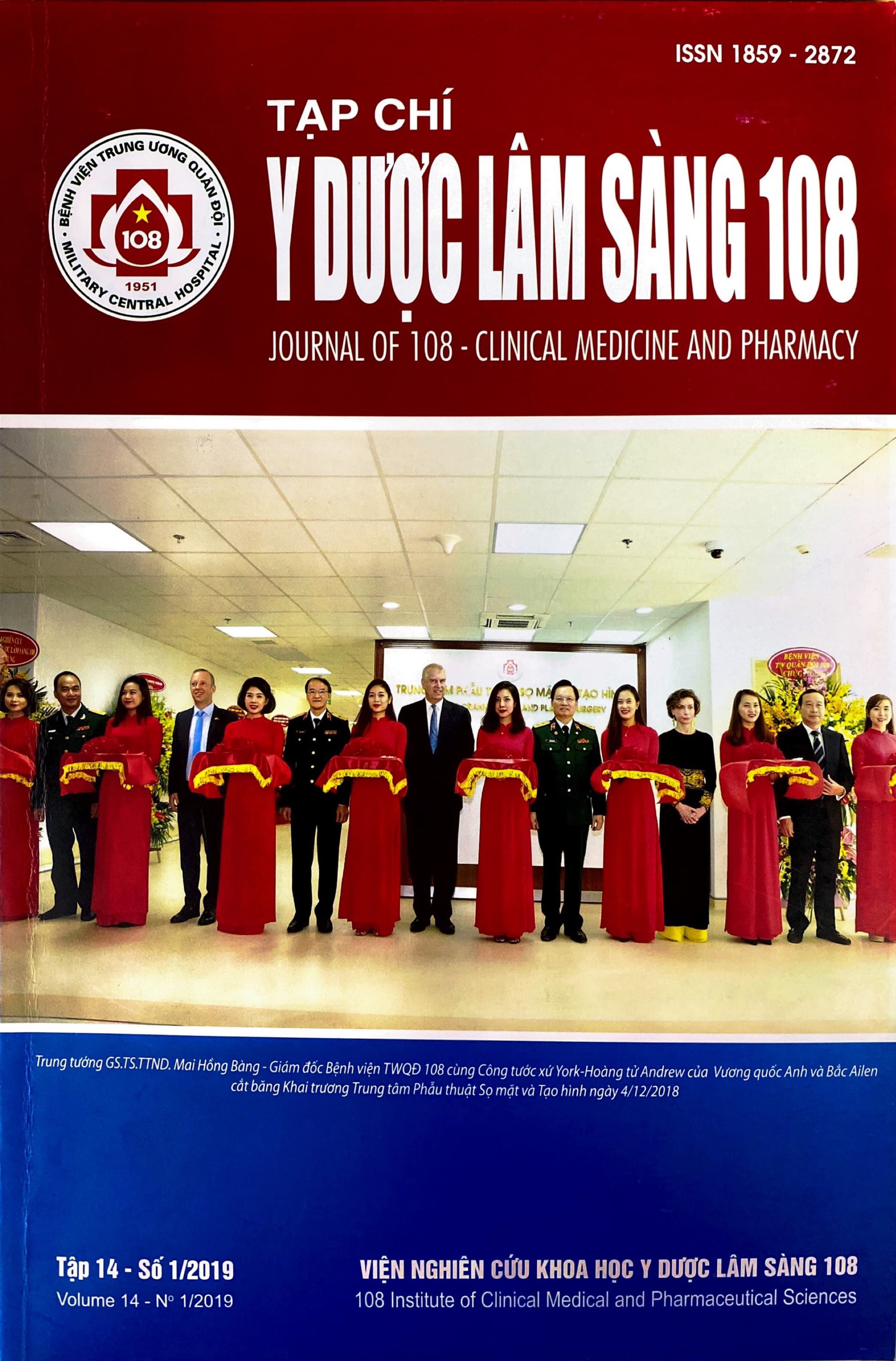Study of skin and mucosa fungal infections in patients at Quy Hoa National Leprosy Dermatology Hospital from 2015 to 2018
Main Article Content
Keywords
Abstract
Objective: Study the proportion and characteristics of the dermatophyte infection at Quy Hoa National Leprosy Dermatology Hospital (2015 - 2018). Subject and method: Samples were collected from the direct examinations to test the pathogen of fungi from patients who examined at this hospital from 2015 to 2018. Result: The results of dermatophyte examinations of patients with skin and mucosa infections at Quy Hoa National Leprosy Dermatology Hospital increased year on year, indicated the overall infection proportion was 7.24%. In that, patients with cutaneous mycosis confirmed 55.1%, especially: The body was the highest: 77.55%, the next to the buttocks /groin: 16.86%, the head/ face: 2.46% and the lowest was the mouth/gums: 0.31%. Male was 55.32%; female was 44.68%. The age group of 20 - ≤ 29 (32.90%), the number of patients increased in June and July (dry season) and decreased in the rainy season. Conclusion: The number of patients with mycosis infections at Quy Hoa National Leprosy Dermatology Hospital increased year on year. The highest of age group was in the 20 - 29 at 32.90%.
Article Details
References
2. Nguyễn Hoàng Ân (2015) Nghiên cứu đặc điểm và xác định một số loài nấm sợi gây bệnh nấm da ở bệnh nhân đến khám và điều trị tại Bệnh viện Phong - Da liễu Trung ương Quy Hòa 2013- 2015. Đề tài nghiên cứu khoa học cấp cơ sở, tr. 45-46.
3. Trần Trọng Dương (2015) Xác định chẩn đoán vi nấm gây bệnh bằng phương pháp soi trực tiếp tại Bệnh viện 19-8, Bộ Công an. Y học thực hành, 4/957, tr. 17-19.
4. Trần Xuân Mai (2010) Ký sinh trùng y học. Giáo trình đại học, Đại học Y dược thành phố Hồ Chí Minh, tr. 423-440.
5. Nguyễn Hữu Sáu (2010) Nghiên cứu tình hình đặc điểm bệnh nấm nông và kết quả xét nghiệm soi nấm trực tiếp tại khoa xét nghiệm Bệnh viện Da liễu TW. Y học thực hành, tr. 732.
6. Nguyễn Thị Xuân (2012) Khảo sát tình hình nhiễm vi nấm malassezia ở một số bệnh da thường gặp trên bệnh nhân đến khám tại Bệnh viện Da liễu Trung ương từ tháng 2 tới tháng 10 năm 2012. Tạp chí nghiên cứu y học (Trường Đại học Y Hà Nội).
7. Abu Elteen KH and Ablul Malek M (1999) Prevalence of dermatophytoses in Zaraga district of Jordan. Mycopathologia 145(3): 137-142.
8. Hazen KC (1995) New and emerging yeast pathogens. Clin- Microbiol-Rev 8(4): 462-478.
9. Imwidthaya S and Thianprasit M (1988) A study of dermatophytoses in Bangkok. Mycopathologia 102(1): 13-16.
10. Kasai T (2001) 1997 epidemiological survey of dermatophytoses in Japan. Nippoo ishinkin gakkai zasshi 42(1): 11-19.
 ISSN: 1859 - 2872
ISSN: 1859 - 2872
